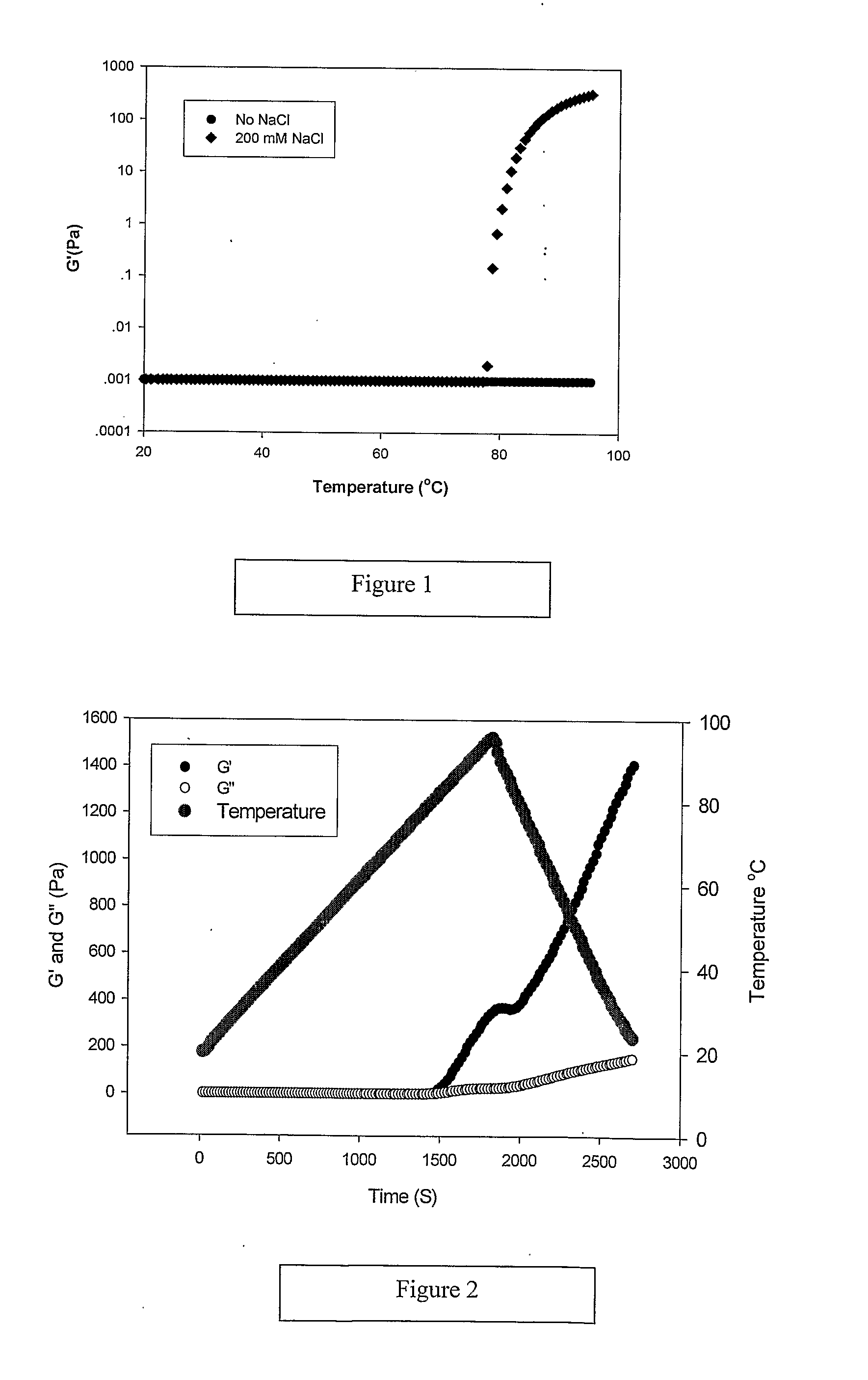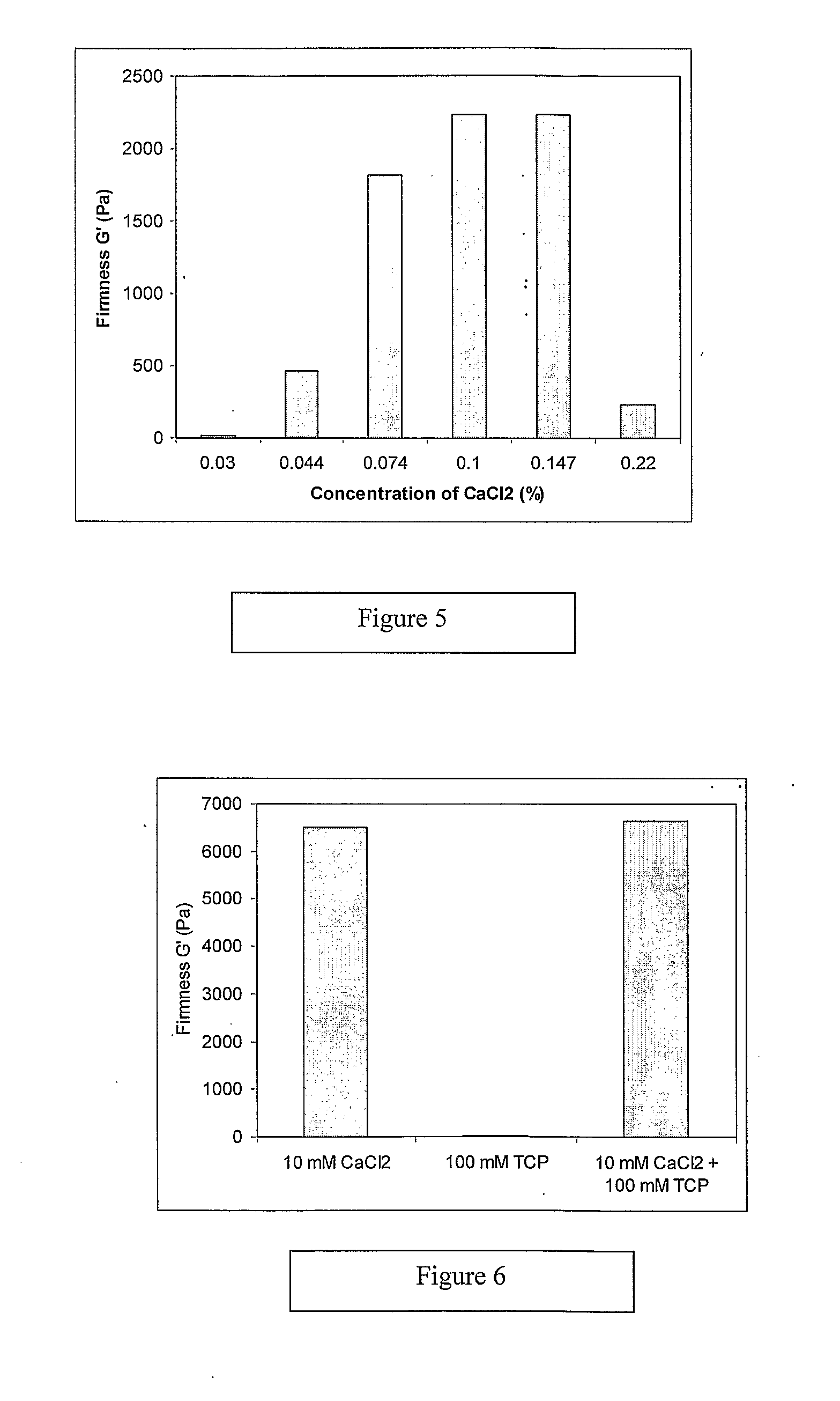Protein emulsion gels and processes for their preparation
- Summary
- Abstract
- Description
- Claims
- Application Information
AI Technical Summary
Benefits of technology
Problems solved by technology
Method used
Image
Examples
example 1
Effect of Protein Concentrations on the Properties of Emulsion Gels
[0055]WPC solutions (pH ˜6.9) were prepared using A392 and then mixed various quantities of sunflower oil to make final protein concentration of 1-5%, w / w, and final oil content of 2.5 to 20%, w / w. NaCl was added at 1.2%, w / w. After homogenisation (400 bars) the emulsions were sealed in 200 ml retortable cans and then retorted (121° C. for 16 min). The firmness of the gels was evaluated by visual assessment after holding overnight. The results are shown in Table 1. The results show that even at a low protein concentrate of 1.6% and an oil concentration of 5%, the heated emulsion still formed gels. The results demonstrate that the higher the fat or the protein contents of the emulsion, the higher the gel firmness.
TABLE 1Emulsion gel firmness.Protein concentration (%, w / w)Oil (%, w / w)11.622.433.24511.522.5337222.52.53410?22.5334415?33444420?444444Firmness scores given to gels formed after heating or retorting of emulsi...
example 2
Effect of NaCl on Emulsion Gel Formation
[0059]Emulsion of the same composition as that in Example 1 was heated in the presence or absence (control) of 200 mM NaCl. The results show that the storage modulus (G′) increased abruptly when the temperature reached 78° C. and beyond (FIG. 1 and FIG. 2), indicating the formation of gel at this temperature. In contrast, there were no observable changes in G′ of a control emulsion sample heated in the absence of NaCl.
example 3
Effect of Salt Concentration on the Properties of Emulsion Gels
[0060]The emulsion gels consisting of 2.4% protein (A392) and 10% sunflower oil in the presence of different concentrations of NaCl were prepared under the same conditions as explained above. The firmnesses (G′), measured using the dynamic rheological measurements described in the Materials and Methods section above, of emulsion gels at 20° C. are shown in the FIG. 3. The emulsions started to form heat-induced gels at NaCl of around 0.41%. The gel firmness increased with increasing NaCl content up to 2.32% (100 mM), beyond which the gel firmness remained constant.
PUM
 Login to View More
Login to View More Abstract
Description
Claims
Application Information
 Login to View More
Login to View More - R&D
- Intellectual Property
- Life Sciences
- Materials
- Tech Scout
- Unparalleled Data Quality
- Higher Quality Content
- 60% Fewer Hallucinations
Browse by: Latest US Patents, China's latest patents, Technical Efficacy Thesaurus, Application Domain, Technology Topic, Popular Technical Reports.
© 2025 PatSnap. All rights reserved.Legal|Privacy policy|Modern Slavery Act Transparency Statement|Sitemap|About US| Contact US: help@patsnap.com



